My friend Peter is an excellent cook. It’s a pleasure to be invited to his house for dinner. I particularly love to be there when he prepares braised lamb shanks, rich with rosemary and garlic, served with an orzo-shaped pasta. However, it is his spanakopita, or spinach pie, that is my favorite. Before publishing this, I warned other friends of Greek or Middle Eastern heritage. Even though I have enjoyed many delicious versions of their spanikopita, Peter’s is the best of the best.
His recipe comes from his mother Bea. When he left home for college many years ago, she sent him off with a loose-leaf binder full of recipes, including spanakopita, and the cookbook Greek Cooking for the Gods by Eva Zane. He still uses both.

Almost all recipes for spinach pie have the same elements: phyllo dough, spinach, green onions, feta, and dill. I’ve tried to analyze what makes his a standout. First of all, there is a thicker spinach layer than in most pies. Second, even more importantly, the spinach is steamed rather than sautéed. When combined with the eggs, the filling takes on a particularly lush texture. Also, there is significantly more dill and parsley than in most recipes. The herbs function as another vegetable rather than merely as a seasoning.
Phyllo doughs are categorized by the thickness of the sheets. Number 7, usually used for making baklava, is perfect for this pie. If the dough for your spanakopita sits in a refrigerated case with a fluctuating temperature, it can transition from frozen to unfrozen and back again. This phyllo will be dry, brittle, and much more difficult to work with. To avoid this, try and buy your dough from a Middle Eastern grocery that does a brisk business so as to get a fresh box.
Spanakopita reheats well. The dough crisps up and the filling stays moist. You can also freeze it in the baking dish before it has gone in the oven. Do not defrost; it should go directly from the freezer to a preheated oven.
Ingredients
3 lb spinach
1 lb feta, crumbled
6-8 large eggs, lightly beaten
2 bunches scallions, minced
1 large bunch parsley (3 cups), minced
½ large bunch dill (1½ cups), minced
salt and pepper
1 pound #7 filo dough
½ pound butter melted
½ cup olive oil
Instructions
- Preheat oven to 350°
- Wash, stem, and steam the spinach. Squeeze dry and coarsely chop.
- Mix the steamed spinach with the eggs, feta, scallions, parsley, and dill. Season with salt and pepper. The amount of salt you add will depend on the saltiness of the feta.
- Melt the butter and combine with the olive oil.
- Brush the bottom and sides of a 9×13-inch baking dish with this mixture.
- Line the pan with half of the phyllo, brushing with the butter mixture in between each sheet. Do not worry about the baking dish looking neat at this point. The edges will look rough and there will be some torn sheets; just plaster them down with the melted butter mixture. If the phyllo dough seems to be getting dry and brittle as you work, cover it with a slightly damp towel.
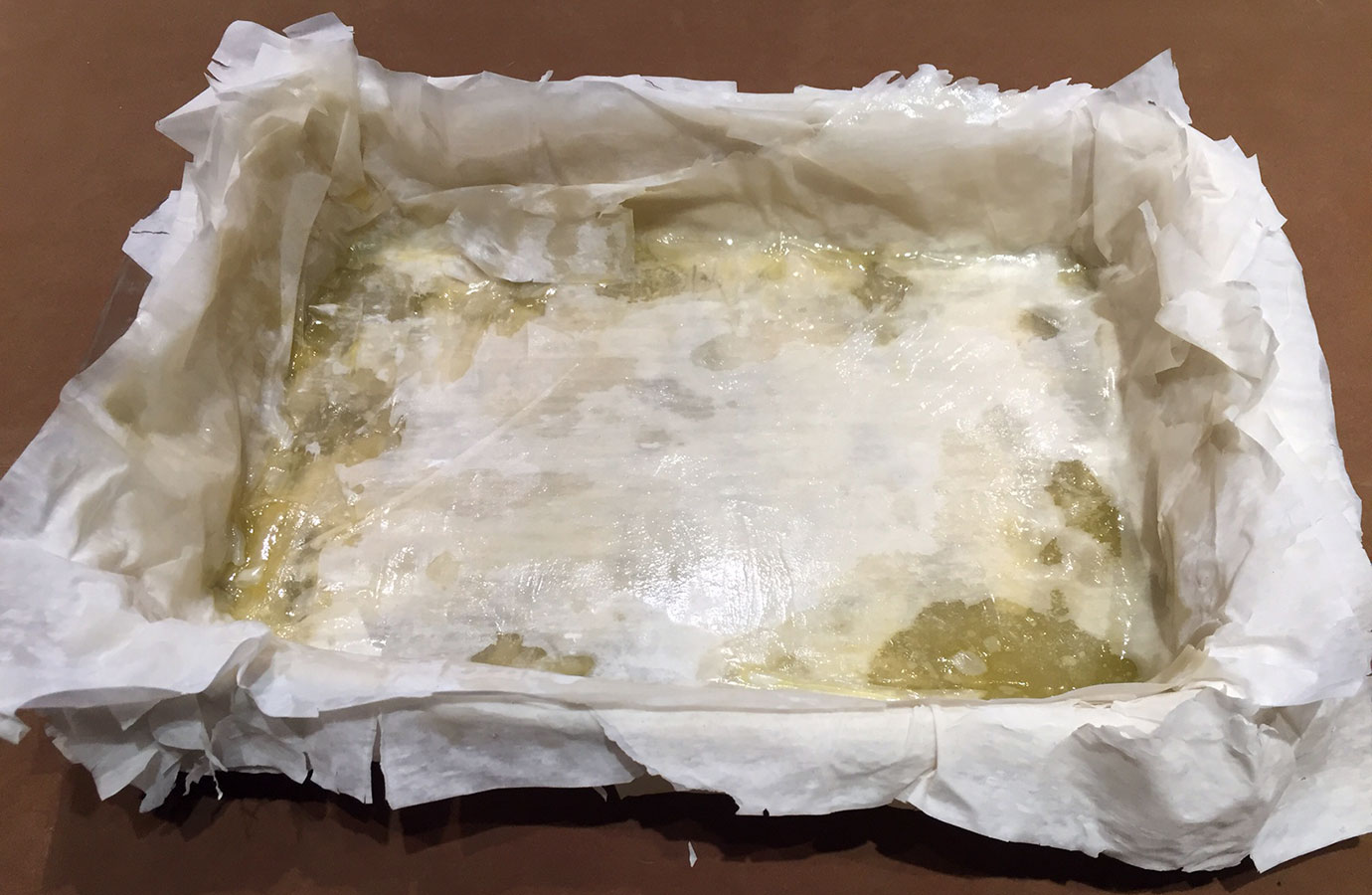
- After layering half the sheets into the pan, gently pat in the spinach filling. Cover that with layer after layer of phyllo, again brushing the dough with the butter and oil mixture in between each layer.
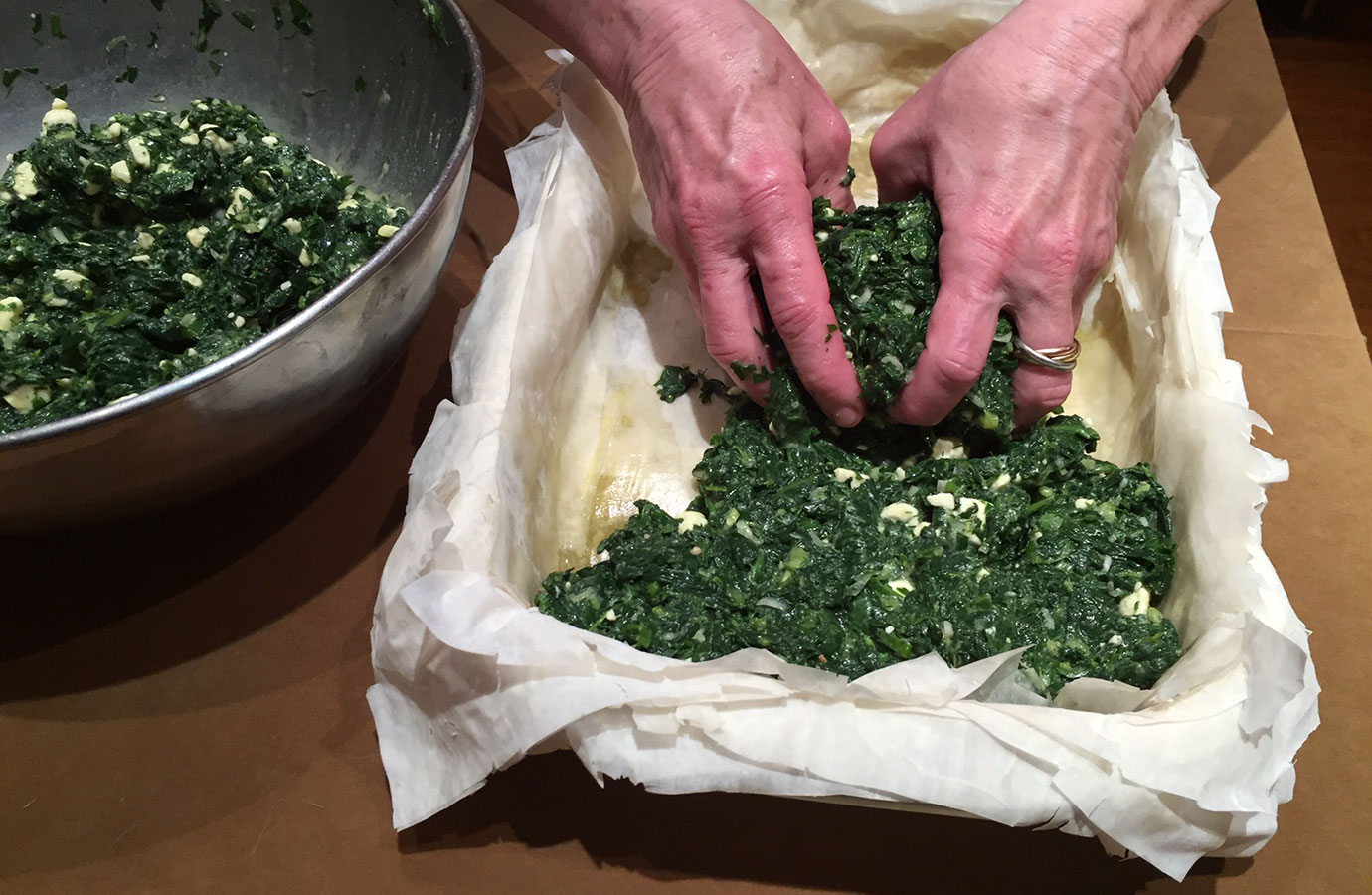
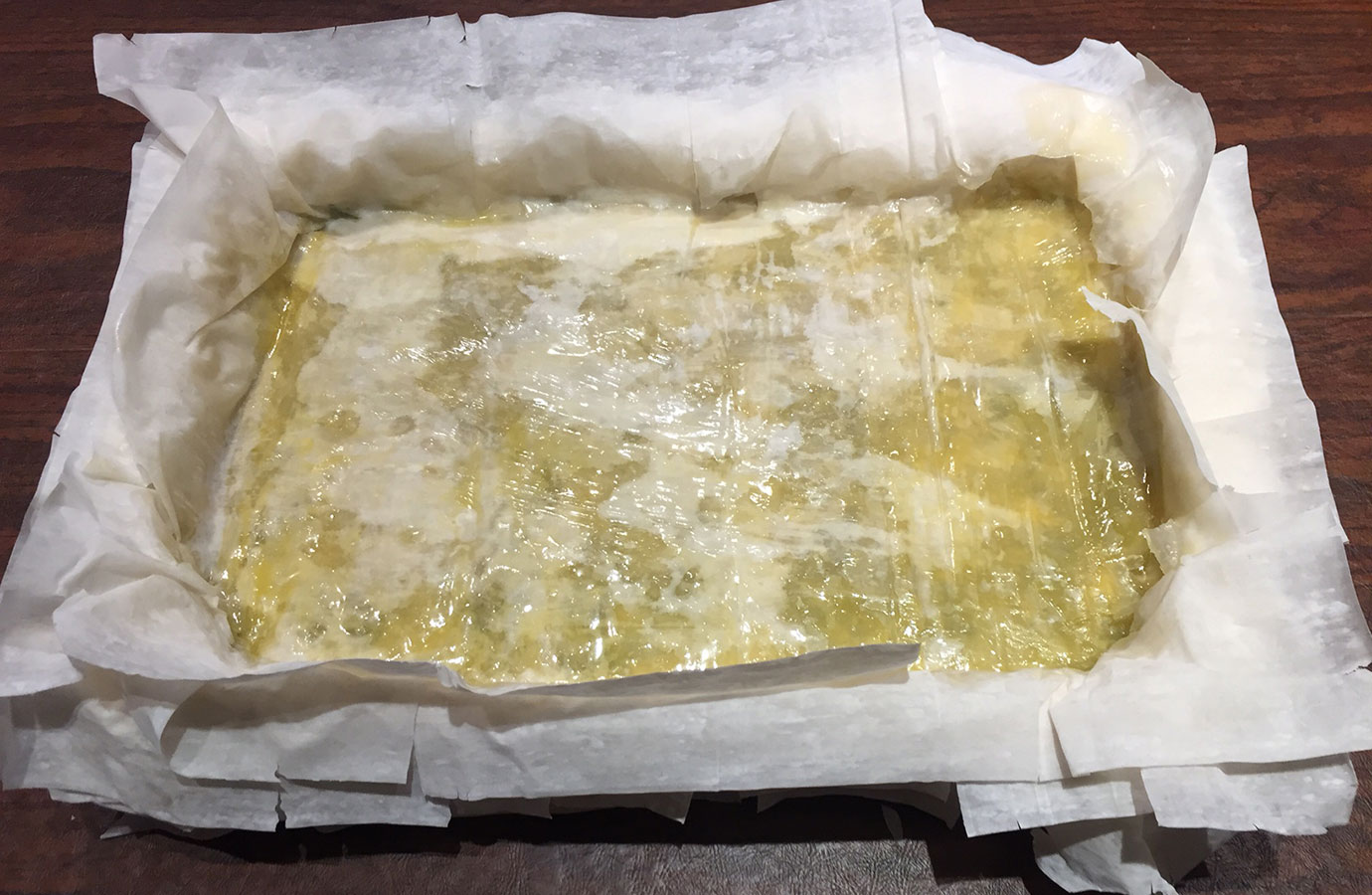
- With a sharp knife, trim the excess layers of dough around the four sides of the pan.
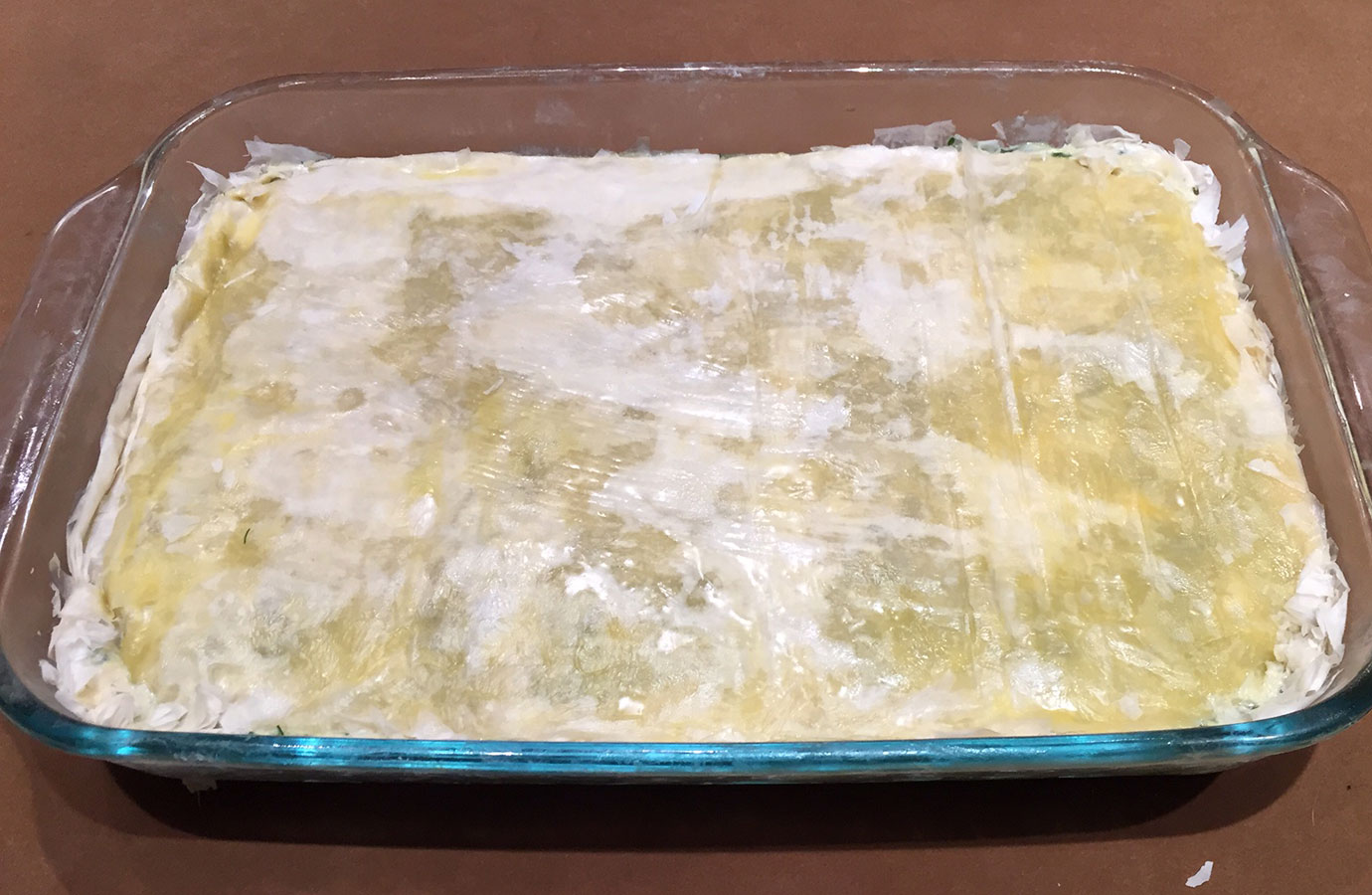
- To keep the top layers from flaking off in the oven, score the top in a diamond pattern, cutting just down to the filling.
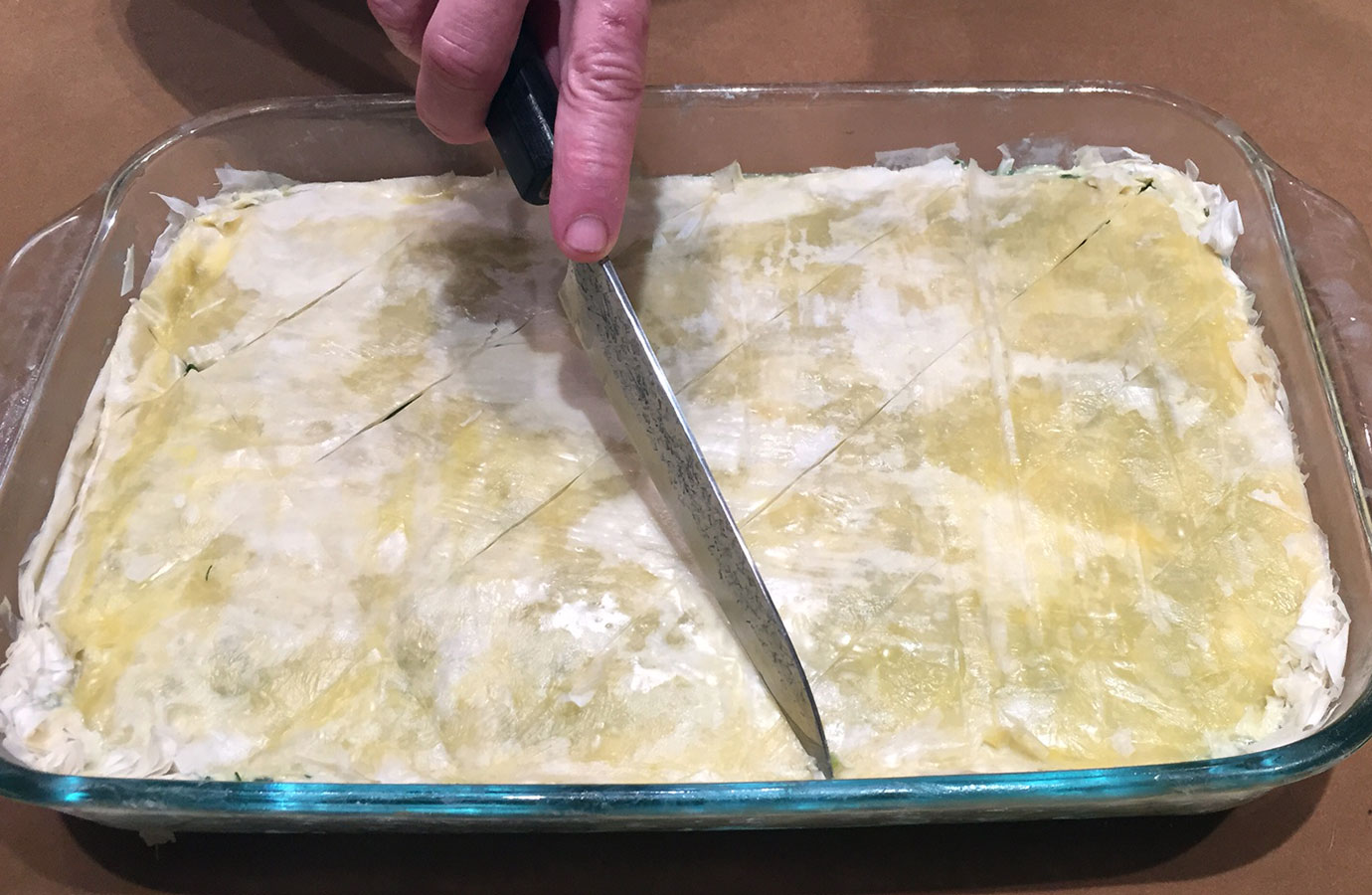
- Bake for approximately one hour until phyllo is golden brown and the filling is hot through the center.
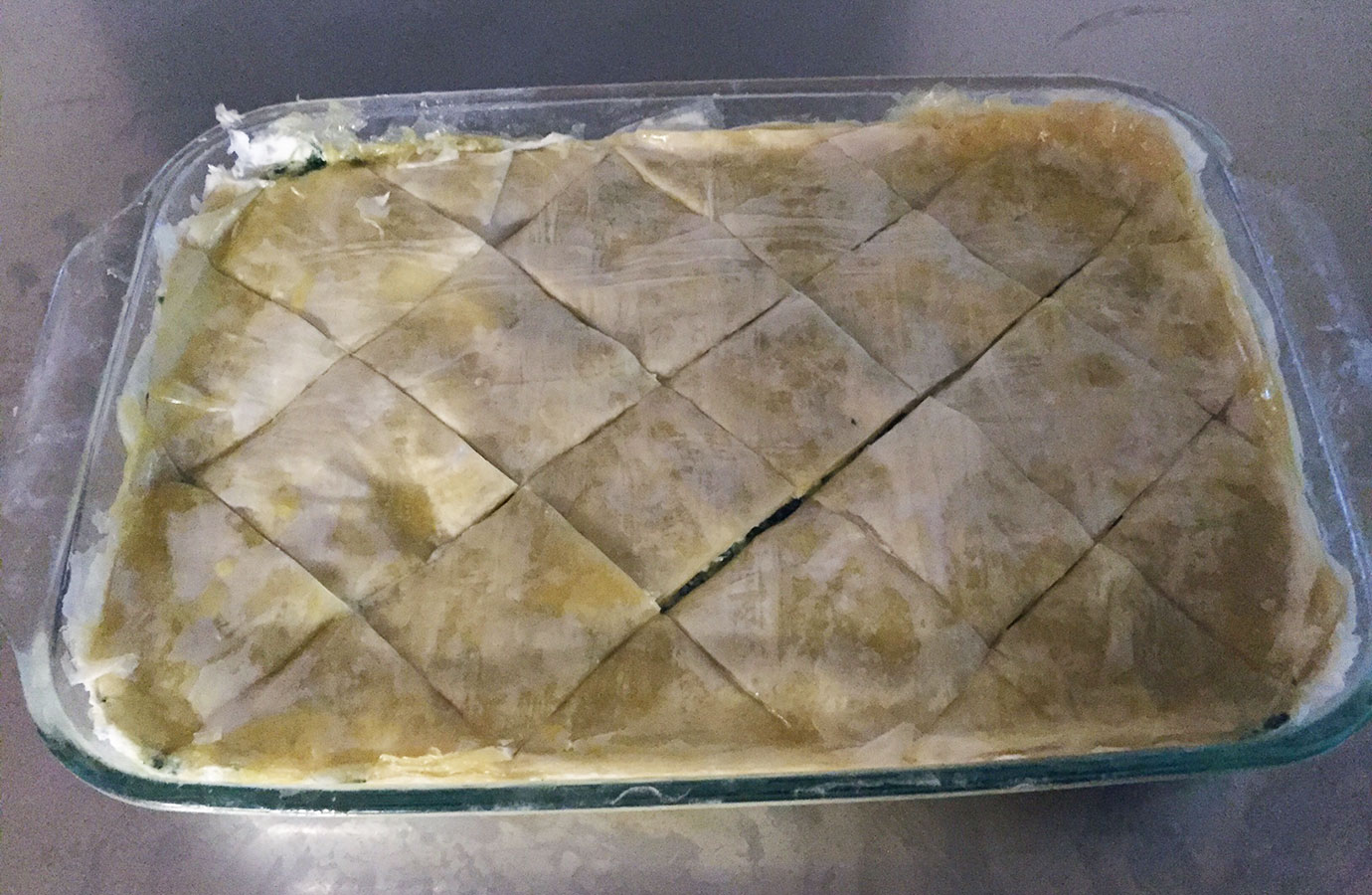
- Let the spanikoita settle in the pan for at least 15 minutes before serving.
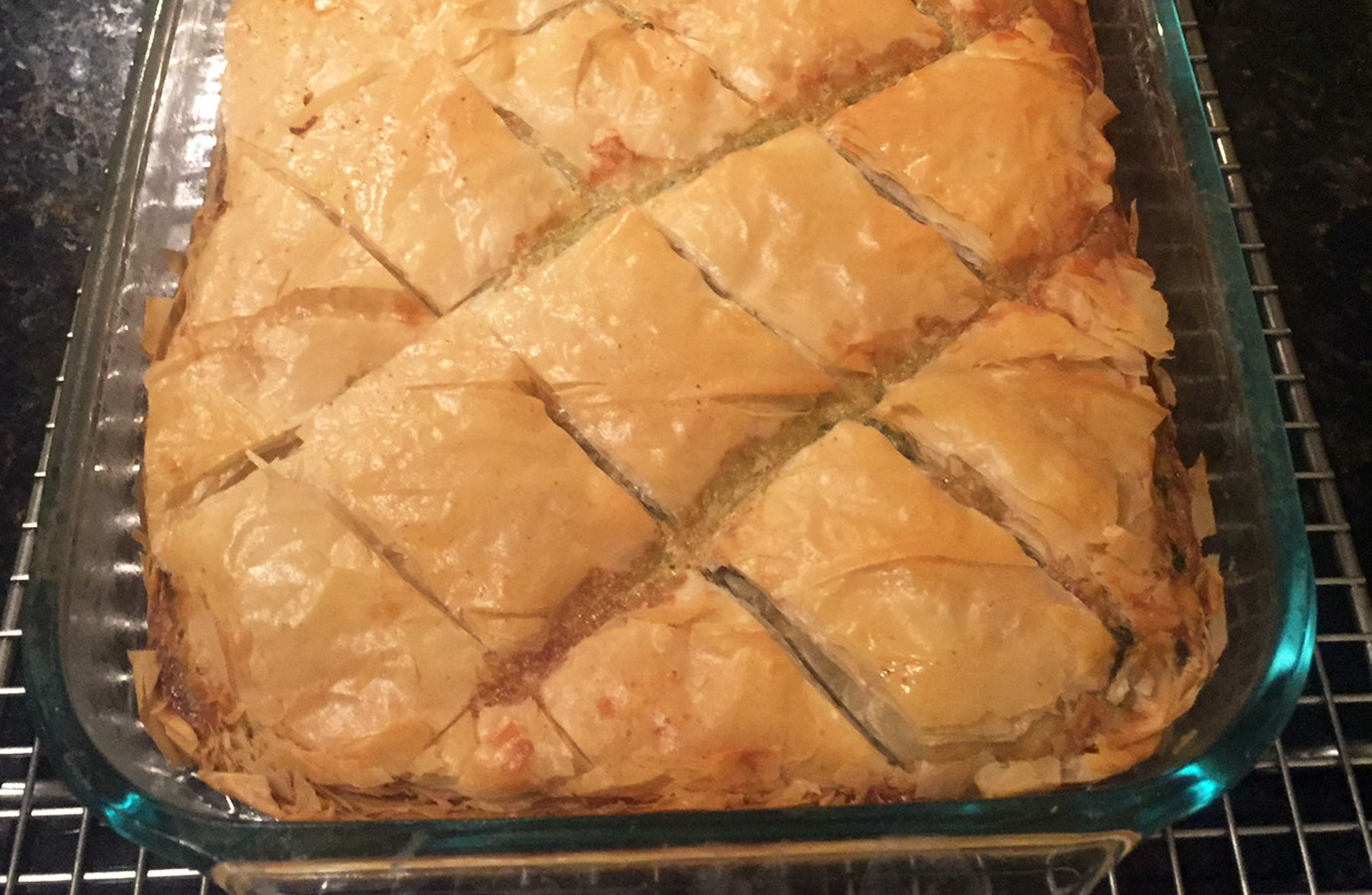

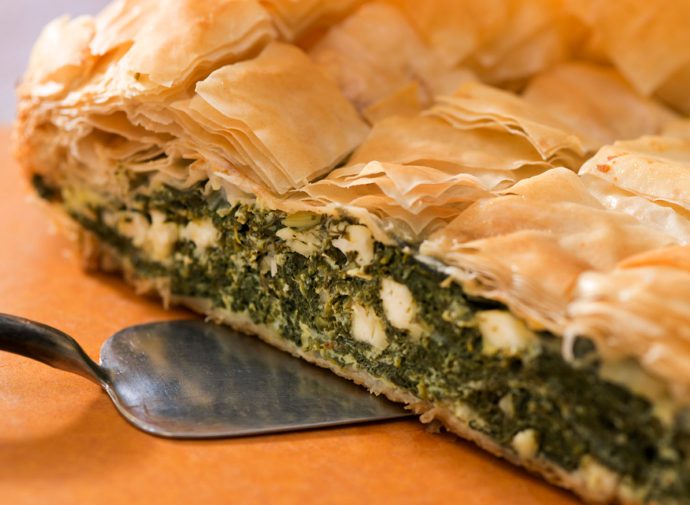
I love the way you give such detail and illustrate each step! I am not a cook but you are tempting me to become one!